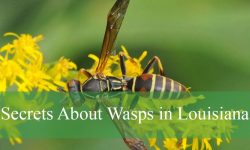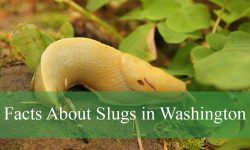There are many different kinds of snakes in the United States, and Pennsylvania is not an exception to this rule. Of all the snakes that live in the state, garter snakes are one of the most prevalent and unique species. Garter snakes are easily identified by their dark dorsal pigmentation, pale side stripes, and small bodies with little space between the heads and necks.
Ribbon snakes, a particularly slender subspecies of garter snakes, take the concept of slimness to the extreme. With this context, let’s delve into a concise exploration of Pennsylvania’s garter snake population.
Different Types of Garter Snakes in Pennsylvania
Common Garter Snake
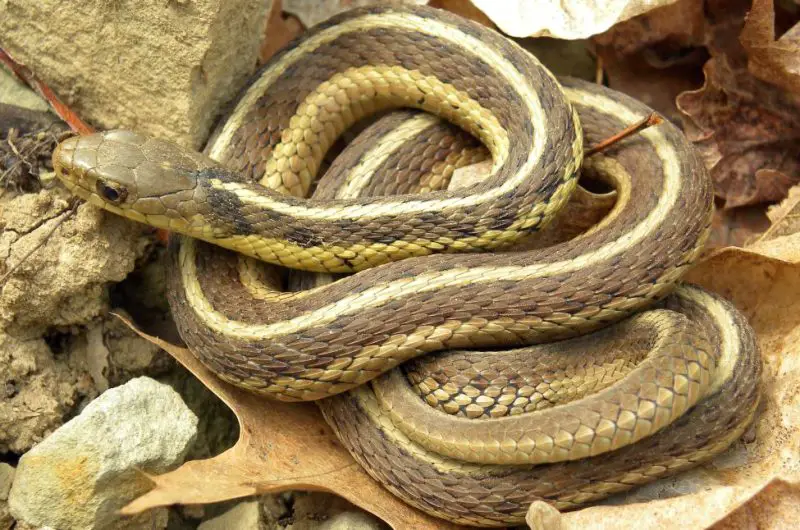
Thamnophis sirtalis, the scientific name for the common Garter Snake, is a native Pennsylvanian that coexists alongside the Eastern Garter Snake in the same environment. The common garter snake has three pale yellow or white stripes that run along its flanks and back. Its coloring is dark olive-green or brown. The side stripes blend in with the pale yellow belly, while the top stripe starts at the neck.
The common garter snake is short and thin, as is typical of garter snakes. While rare specimens reach lengths of up to 4 feet, the most are little shorter than 2 feet. They live in fields, riparian zones, and woodlands at different elevations in Pennsylvania. Common garter snakes hibernate in groups during the winter months; these groups of snakes share a burrow known as a “hibernacula.”
When the weather is warmer throughout the day, this snake is more active. In pursuit of tadpoles, frogs, and worms, it swims across ponds and slithers along shorelines. Interestingly, common garter snakes have been observed to eat warm-blooded animals like mice and voles, in contrast to certain other species.
Eastern Ribbon Snake
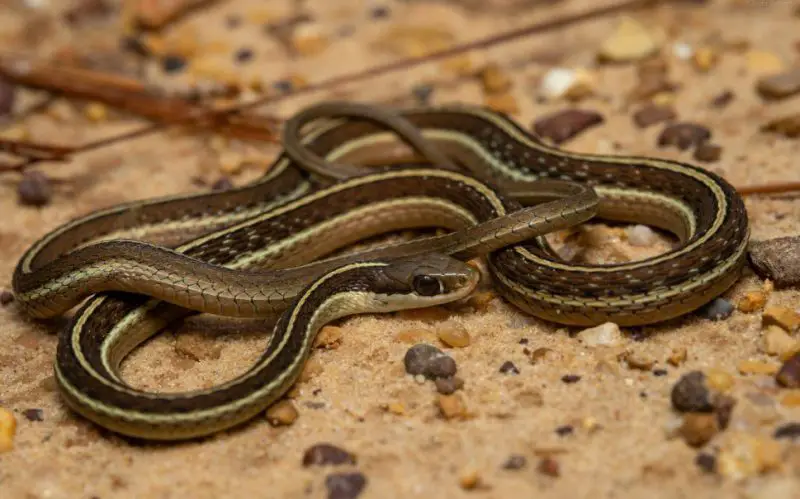
The most common subspecies of Ribbon Snakes is the Eastern Ribbon Snake, scientifically known as Thamnophis sauritus sauritus, which is why it is also called the “Common Ribbon Snake.” Its wide range includes much of the Southeast, and some individuals have been found as far north as New England and Pennsylvania, especially in the eastern portion of the state.
This skilled swimmer lives, eggs, and pursues its prey mostly near lakes and streams. Its primary food sources include salamanders and frogs, as well as small fish. The snake’s size changes with age, ranging from half a foot to over two and a half feet, and its eating habits change depending on how big of prey it can eat.
The three unique stripes on the sides and back of Eastern Ribbon Snakes aid in their identification. These markings, which help identify the species, consist of a stripe on either side and a stripe running the length of the spine from the head to the tail. Eastern Ribbon Snakes rarely act defensively when they are threatened; instead, they usually hide.
Ribbon Snake
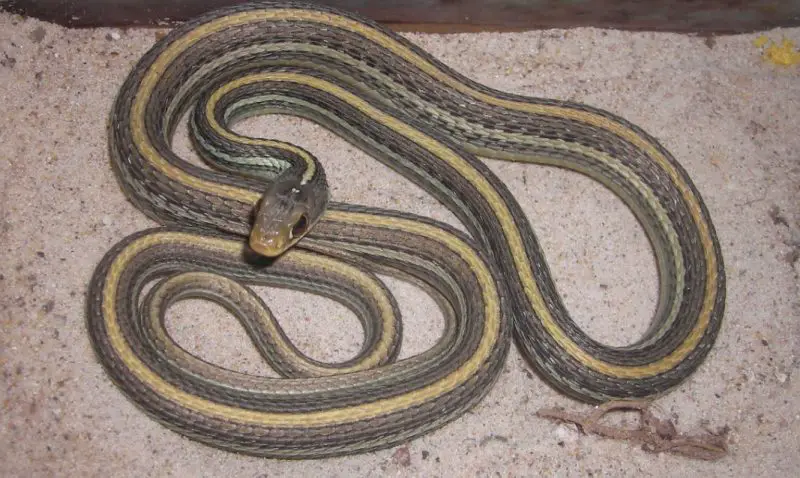
The Ribbon Snake, or Thamnophis sauritus as it is properly named, is a species of garter snake found in much of the eastern United States. Seeing a ribbon snake on a nature walk is not dangerous because it is not poisonous to humans.
One of their distinguishing characteristics is that ribbon snakes usually have three yellow stripes on them. This distinctive pattern is seen in Pennsylvania in both Ribbon snake species.
In response to Pennsylvania’s winter cold, ribbon snakes undergo brumation, a hibernation-like state allowing periodic awakenings for drinking water before returning to sleep.
Ribbon snakes choose their habitats mostly based on the presence of water. They are adept swimmers and use this ability to go for fish, toads, and frogs. Interestingly, ribbon snakes do not eat warm-blooded animals; instead, they only hunt cold-blooded prey.
The Appalachian Mountains of Pennsylvania are home to several Ribbon Snakes as well. They thrive in these forests because they offer a lot of moisture as well as a variety of hiding places beneath leaf litter and low-growing vegetation.
Northern Ribbon Snake
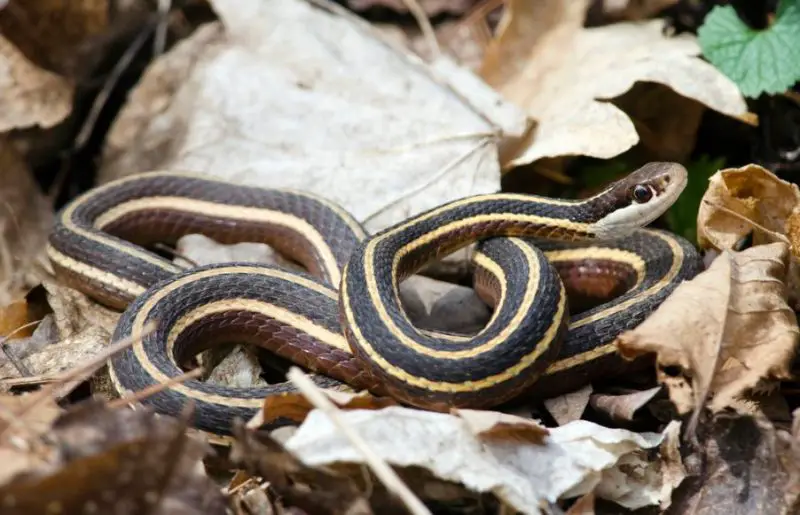
As the second of the four ribbon snake subspecies, the northern ribbon snake is officially known as Thamnophis sauritus septentrionalis. All of Pennsylvania’s northwest is home to this specific subspecies, which is found only in its northern region. Due to their preference for living near the coastlines of these bodies of water, northern ribbon snakes have a tight relationship with the Great Lakes.
One way to identify a northern ribbon snake is to look for its three noticeable white or light yellow stripes on its mostly black body. As is typical of garter snakes, these stripes are located on the left side, right side, or spine. The snake also has small white “half-moon” marks right in front of each eye, as well as a pale belly.
Low-lying locations with plenty of water are the best sites to look for northern ribbon snakes, for those who are lucky enough to venture into northwest Pennsylvania. This snake is a skilled swimmer that lives well in freshwater settings. Its main food sources include salamanders, tiny fish, and frogs. The northern ribbon snake, which may grow up to 26 inches in length, contributes to the region’s biodiversity.
Eastern Garter Snake
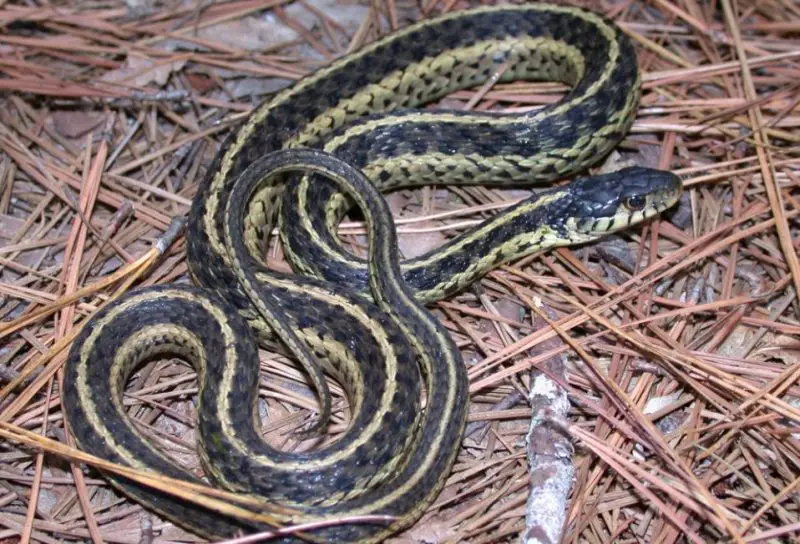
The Eastern Garter Snake, scientifically known as Thamnophis sirtalis sirtalis, stands as a subspecies of the Common Garter Snake, thriving throughout the United States in various habitats like deserts, coasts, and prairies. Flourishing notably in the forests and meadows of Pennsylvania, it presents an olive green, black, or brown base color accentuated by occasional darker green scales. Three striking yellow stripes elegantly trace its body, aligning with the spine and adorning its sides, creating a distinctive and captivating presence within its diverse range of habitats.
While the average length reaches 26 inches, some Eastern Garter Snakes surpass 40 inches. Highly adaptable, they nest in various locations like trash piles, old farmland, and outbuildings, even making appearances in city community gardens. Despite their opportunistic diet, consuming frogs, worms, and slugs, they swiftly retreat when threatened, prioritizing evasion over confrontation.
Shorthead Garter Snake
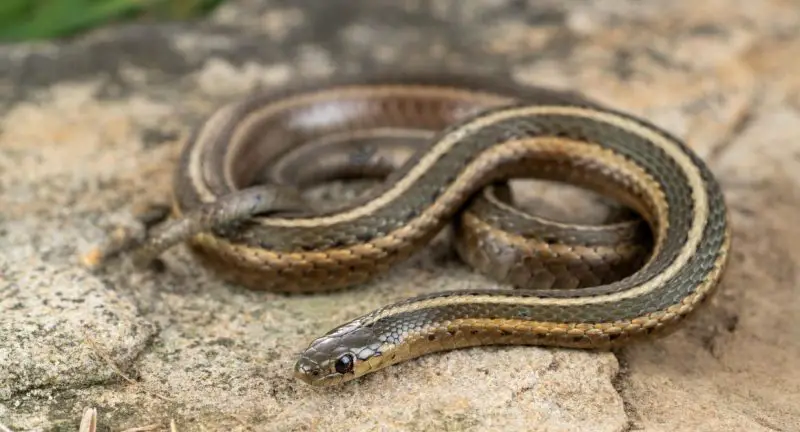
The scientific name for shorthead garter snakes is Thamnophis brachystoma, and they are native to Pennsylvania, only found in the northeastern region of the country. These snakes usually live under logs, rocks, or leaf litter that is near open fields. These areas could be fallow agricultural grounds produced by human activity or natural meadows.
As moderate baskers, these snakes display a peculiar behavior in that they prefer to bask on overcast days. In contrast to several other snake species, Shorthead Garter Snakes exhibit social behaviors, frequently gathering in groups. However, scientists are still unsure of the precise causes of this behavior.
These snakes, which only eat earthworms, use the exposed soil in meadows and open fields to find and seize their meal. Shorthead Garter Snakes are characterized by their olive-green scales and three distinct yellowish stripes that run from the head to the tail. They range in length from 10 to 22 inches.
People Who Read This Also Read:


